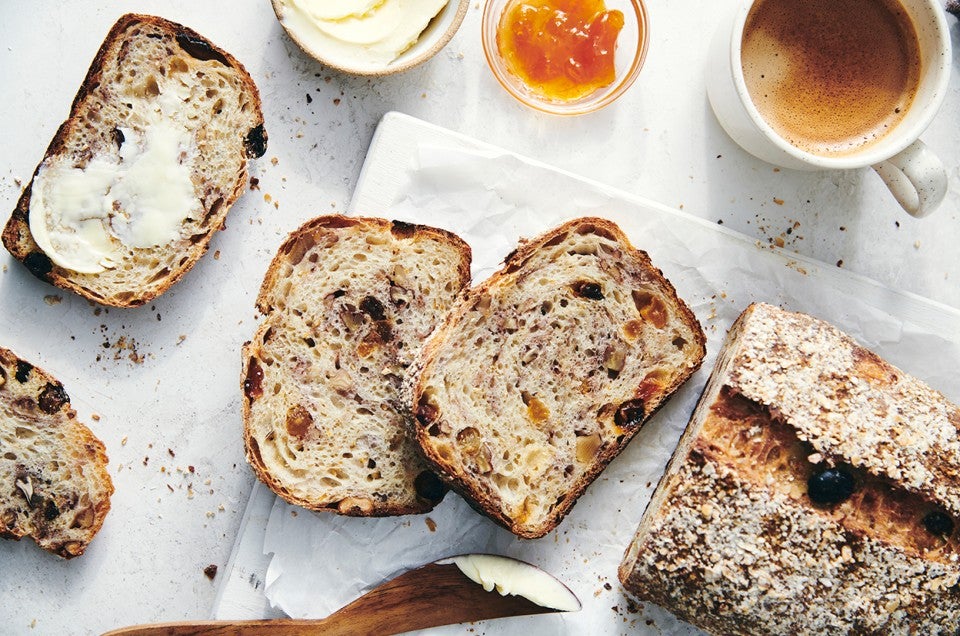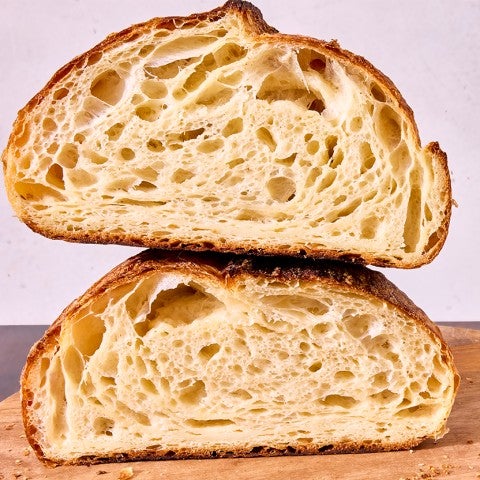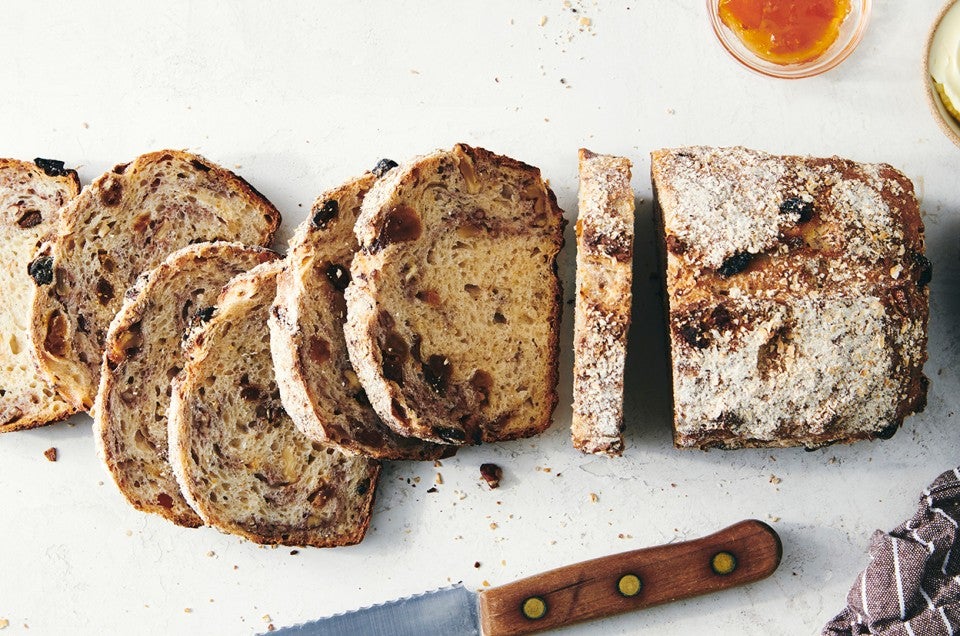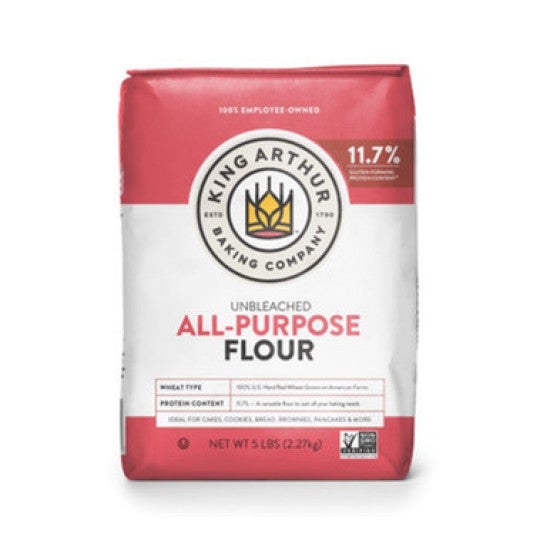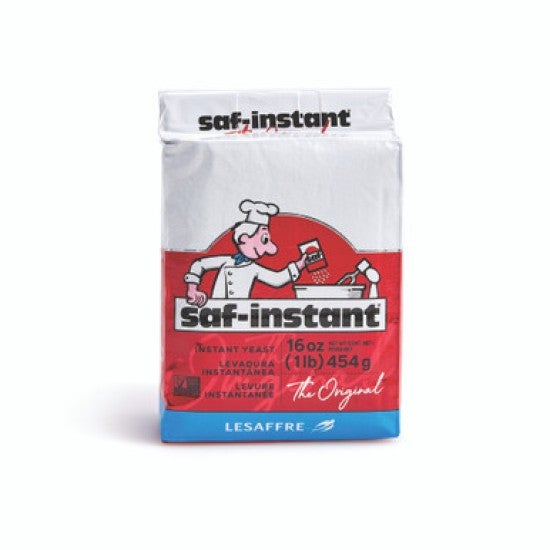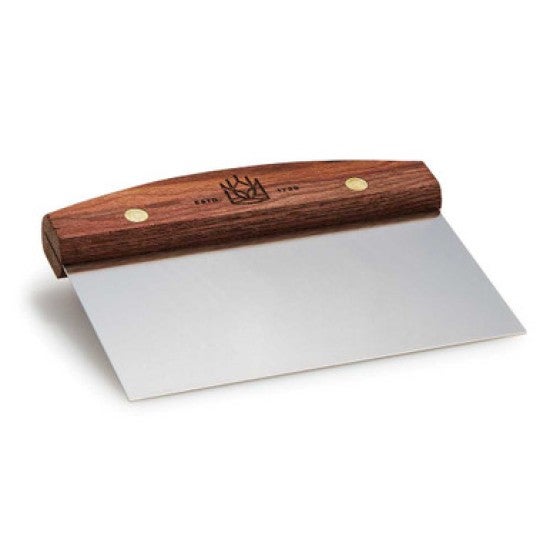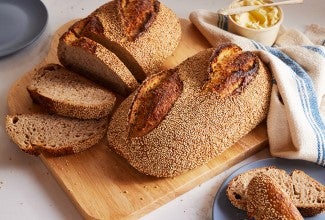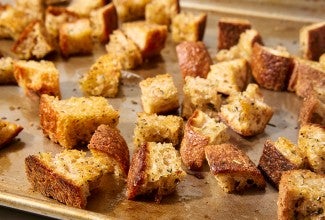-
To make the levain: Weigh your flour; or measure it by gently spooning it into a cup, then sweeping off any excess. (To measure by volume, see "tips," below.)
-
In a medium bowl, mix together all the levain ingredients.
-
Cover the bowl and set aside to rest at room temperature for 12 to 16 hours; overnight works well.
-
To make the dough: Weigh your flour; or measure it by gently spooning it into a cup, then sweeping off any excess.
-
In a large bowl, whisk together the cooked oats, honey, water, levain, butter, allspice, nutmeg, and orange zest.
-
Add the flour and yeast, and mix until the dough forms a shaggy mass, with no dry floury streaks remaining.
-
Cover the bowl and allow the dough to rest for 30 minutes.
-
Add the salt and knead by hand in the bowl until incorporated.
-
Cover the bowl and allow the dough to rest for 30 minutes.
-
To do a bowl fold: Use your wet hand to grab a section of dough from one side. Lift it up, then press it down firmly into the middle. Repeat this eight to 12 times, rotating the bowl a quarter-turn each time. Cover the bowl and allow the dough to rest for 30 minutes.
-
Repeat the bowl fold twice more, letting the dough rest for 30 minutes afterward each time.
-
Add the walnuts and raisins to the dough and gently knead by hand until fully incorporated. Cover the bowl and allow the dough to rest until puffy, 1 to 2 hours.
-
To preshape the dough: Flour the top of the dough, turn it out onto a lightly floured surface, and gently form it into a rough round. Cover and let rest for 20 minutes.
-
To shape the dough: Lightly grease an 8 1/2" x 4 1/2" metal loaf pan; a stoneware or glass pan isn’t appropriate here. Gently shape the dough into a smooth log and settle it into the pan seam side down.
-
Tent the pan with lightly greased plastic wrap or your favorite reusable cover and allow the loaf to rise until slightly puffy, 30 to 60 minutes.
-
Cover the loaf securely and refrigerate it for 8 to 16 hours, depending on your schedule.
-
To bake the loaf in a lidded Dutch oven: Set a large Dutch oven or lidded (covered) baker on the middle rack of the oven. The Dutch oven needs to be large enough to hold an 8 1/2” x 4 1/2” loaf pan; if you don’t have a Dutch oven that large, skip to step #22.
-
Preheat the oven to 450°F for at least 30 minutes with a rack in the center.
-
Remove the loaf from the refrigerator. Using a lame or sharp knife, make a single 1/4” deep slash lengthwise down the center of the loaf. Using a mister, spray the top of the loaf with water and top with the chopped oats.
-
Remove the preheated Dutch oven and set the loaf pan inside it, cover with its lid, and return the whole thing to the oven.
-
Immediately reduce the oven temperature to 425°F and bake the covered loaf for 20 minutes. Remove the Dutch oven and carefully return the loaf (in its pan) to the oven rack. Bake the loaf for an additional 20 to 25 minutes, until the top is a deep golden brown. Proceed to step #27.
-
To bake the loaf without a Dutch oven: Preheat the oven to 450°F with a baking stone or steel placed on a middle rack. Allow the oven to preheat for at least 30 minutes to ensure it’s thoroughly heated.
-
To add steam to your oven: While the oven is preheating, place an empty cast iron skillet on the lowest oven rack, below the stone or steel. If possible, adjust the stone and pan so that the skillet isn't directly under the stone, making it easier for steam to reach the baking bread.
-
Remove the loaf from the refrigerator. Using a lame or sharp knife, make a single 1/4” deep slash lengthwise down the center of the loaf. Using a mister, spray the top of the loaf with water and top with the chopped oats.
-
Place the loaf in the oven and pour about 1 cup of warm water into the skillet. Steam will billow from the pan upward to envelop the bread; be sure to wear good oven mitts to shield your hands and arms. Quickly close the oven door to trap the steam.
-
Immediately reduce the oven temperature to 425°F and bake the loaf for 40 to 45 minutes, until the top is a deep golden brown.
-
Remove the loaf from the oven and transfer it to a rack to cool for 5 minutes. Remove it from the pan and return it to the rack to cool and set completely before cutting, 3 to 4 hours.
-
Storage information: Store leftover bread, loosely wrapped, for several days; freeze for longer storage.
